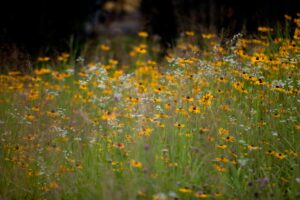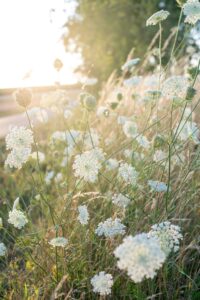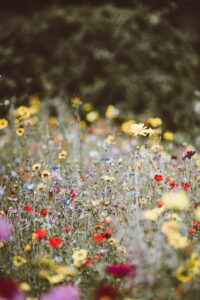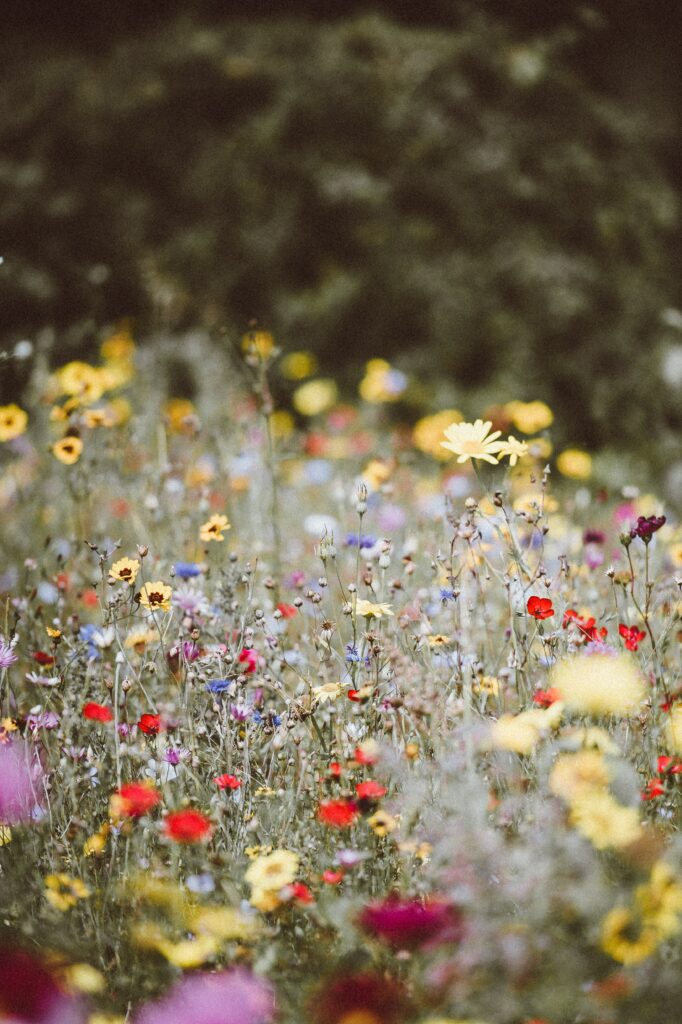 Wildflowers are tough. They root in unlikely, often hostile environments, yet they manage to grow and bloom.
Wildflowers are tough. They root in unlikely, often hostile environments, yet they manage to grow and bloom.
I love cruising down a country highway on a spring or early summer day. There’s always so much to see as new life steals quietly into our Ozark hills and makes her appearance in random splashes of colorful wildflowers and the bright greens of fresh new grass and leaves. Willow trees wave their yellowing branches quite early as trout lily and wild columbine cling to rugged hillsides. Serviceberry, wild plum, and pear, then redbud and dogwood absolutely flaunt their beauty. Wild violets carpet the forest floor and roadside ditches. Drifts of daffodils flourish where once a homestead stood. They blend nicely with wild purple phlox. Right about now, the oxeye daisy is taking center stage, soon it will be the elegant Queen Anne’s Lace and brilliant orange butterfly weed that will decorate the fields and roadsides. Sunny yellow coreopsis and fiery Indian paintbrush will exist alongside tall grasses that fill the bellies of fattening cattle. In mid to late summer, the ice blue chicory stands strong in the oppressive heat and graces the edges of our roadways. To some, these things of extraordinary beauty are nothing more than weeds. But to a nature lover like me, they are the eye candy that I crave after a long winter.
Wildflowers grow where the seeds find themselves. They must succeed or perish. If they don’t grow, no one notices. It’s as if the seed or the flowers never existed.
Wildflowers and native trees occur naturally and either grow or flourish with no help from humans. Birds and seed-eating mammals cast their seeds to sometimes far-reaching distances. The wind carries seeds aloft and deposits them without a care as to the presence or absence of appropriate soil. Those seeds, whether the size of the tiny columbine offspring or as large as a giant Bur Oak acorn, will live or die according to the productive ability of their landing spot. Their lifespan depends upon adequate light and water, without either of which they cannot survive.
Wildflowers are fragile. Careless or deliberate acts can easily destroy them.
When humans traipse through the woods and meadows without a care as to their presence, tiny beauties can be crushed before their seeds have an opportunity to mature and re-create. When a careless smoker tosses a cigarette out the window, acres and acres of heavily forested land can become scorched and barren. Yes, they will recover, but the forest will sport a new look because some of the old-growth will not reproduce while new species may introduce themselves.
Maybe certain bad habits and other crutches are opportunistic … like weeds, ready to fill the empty spots and choke out the opportunity for better ones. (Paraphrased)
And I wonder if many of the bad habits we display when enjoying a bit of nature carry over into our everyday human lives. Do we walk past a stranger looking for directions and not even notice? Do we turn our back on a child’s questions, deeming them unimportant in the grand scheme of things? Do we refuse to acknowledge pain, discouragement, or even hunger in the eyes of a neighbor? And if we continue to ignore the most common of needs in those around us, will our earth one day resemble a barren forest scorched by fire?
People crave love. They crave acknowledgment. They crave a listening ear. And they are more likely to learn how to love by experiencing love firsthand. Jesus taught us how to love. If we let Him fill us with His Spirit, we can light the dark places in our world. All seeds, whether human, animal, or plant need love, water, and light. Let’s do our part by sharing all those things with everyone we meet. And let’s be very cautious where we step so as not to cause injury to any living thing. With a little love, we could see “wildflowers” blooming everywhere.


